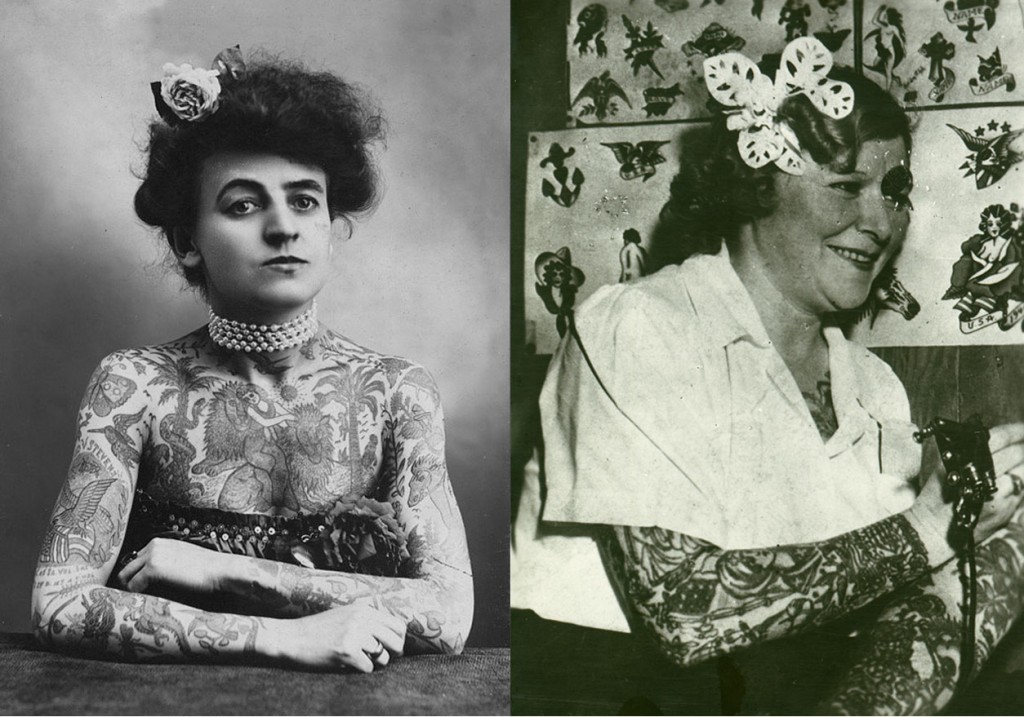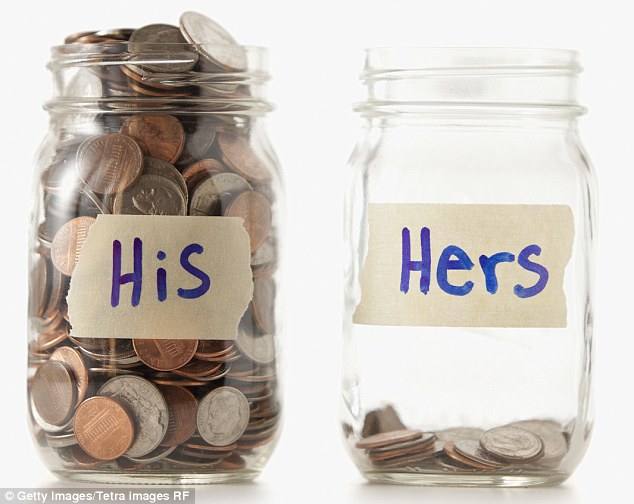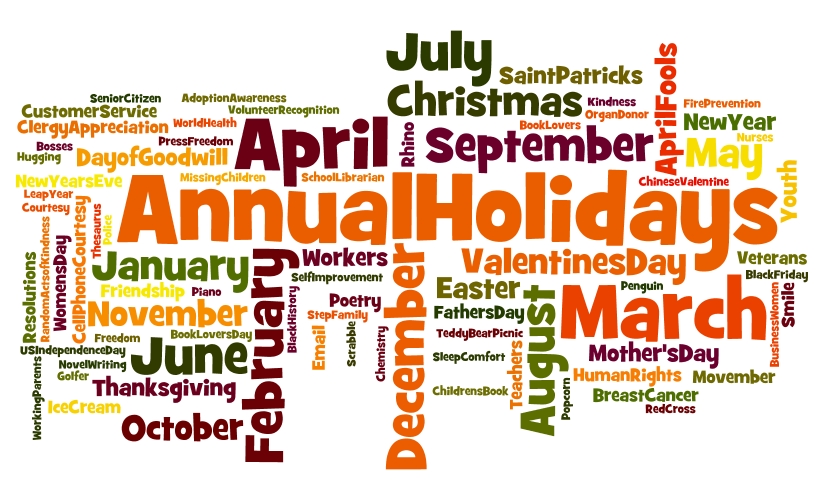The Evolution of Tattoos: From BC to 2016
Since the early days of the BC era, tattoos have existed in the ancient cultures as symbols of resources, strength, legacies of wars, or simply as designs of strength and beauty in femininity. Around 50 B.C., Cleopatra served as the most powerful Women in Egypt, ruling the dynasty with henna tattoos. Although these markings were temporary, Cleopatra’s ink nevertheless served as markings on the body that enhanced her strength and beauty as a leader.
So what happened between 50 B.C. and the early 21st century? Where did tattoos go and why were they no longer apparent on men or women's’ bodies?
Well, it’s always existed fluidly throughout the centuries. Tattooing has reared its head in all cultures, especially in Asian countries. Although, this fact doesn’t necessarily mean all Asian countries had the same views on the practice of tattooing. Although tattoos in early Chinese culture did exist within tribes and warriors, the practice of tattooing was viewed as barbaric and damaging to the physical appearance of the body. Tattoos were even portrayed in this way through Chinese literature in novels during the 12th century period. The art of tattooing continued into the 14th through the 17th century in China, in woman known as the Dulong group, who wore their markings as a right of passage, or the Dai tribes, whose tattoos represented strength during the Ming Dynasty.
In Samoa culture, on the other hand, men and women have proudly represented tattoos for thousands of years. Before the 1800s, it was a ritual tightly bound to the Samoa culture for all Samoa men to get marked with a traditional tattoo that represented a form of cultural identity. Men tended to be heavily tattooed with such symbols of Samoa identity, as well as their rank and status within society. Although their tattoos were not as extensive as the men’s, it was also a regular, ritualistic practice for women to be tattooed.
Although now, celtic tattoos seem to be used as a cultural connection to Ireland or to appreciate the beautiful knot work, that wasn't always the case. Celtic tattoos were primarily used by Celtic warriors, a group of soldiers who took control over Mid and Western Europe, during the iron ages and middle ages. The Celts used such markings to intimidate their opponents during battle.
Tattoos were also used among Native American culture, as observed by John Smith during the 17th century. While women painted their bodies with images of nature represented in plant and animal life, men used symbols to represent war, bloodshed, strength, and status among their tribes. In some cases, the tattoos were permanent.
Although tattoos first began appearing in the late 1800s in the U.S. in western civilization, it really started to boom in American culture in the early 1900s. Women who were covered in tattoos, such as Maud Wagner, used to be considered a spectacle, a freak show that people would flock to in wonderment. Yet, across the pond, British men and women during this period who marked themselves with tattoos used to be perceived as royalty, or having a high social status. One example is George Burchett, know as the King of the Tattooists, who tattooed royalty such as King Alfonso XIII of Spain and King Frederick IX of Denmark. George Burchett himself was covered in tattoos, as well as his wife Edith who served as a canvas for him.
As we move further into the 20th century, many men who served as Navy sailors during the 1940s were heavily tattooed, inking their skin with symbols of war, serving in the navy, and devoting themselves to their country. One example of this is Norman Collins, more famously known by his tattoo artist legacy name Sailor Jerry, who was a Navy man himself. During World War II, Sailor Jerry depicted the lifestyle of sailors which consisted of drinking alcohol, getting tattooed, and being around women.
After the 1950s came to a close, changes and revolutions began to take on a whole new forefront in the 1960s and 1970s. Gay rights and women's liberation was pushed forward with a new kind of strength. The restrictions and boundaries of being conservative and not showing skin, let alone showing ink, was revived during the 1970s. This concept that women wore tattoos for empowering reasons during times where Cleopatra ruled, was restored by Janis Joplin, an influential woman and female artist who displayed her wrist tattoo on the cover of Rolling Stone Magazine.
[youtube id="-qlbXmFFMeY"]
Now in the 2010s we seem to be entering into a period where tattoo sleeves appear to be the new craze, having an armful of tattoos that all connect with each other. Yet, this concept of connecting tattoos also has its roots in culture, existing for many years with Polynesian tattoo masters, who uses symbols to represent a deeper meaning through the connection to Polynesian culture. Today, sleeves can also be represented as a beauty standard. Such is the case in British culture, where attractive celebrities such as David Beckham who serves as an example of physical appeal for the men of England. One in five English adults have tattoos.
Today in 2016, the artistry of tattoos is becoming more innovative, pushing the boundaries of what can be done with a needle by creating color portraits and three dimensional pieces that make viewers wonder in amazement. Such freedom of creativity and the choice to express your emotions or artistry over your own body is crucial. Because it is your choice, not anyone else's.
Although there are such cultural symbol tattoos that have increased in popularly in today’s society, such as mandala tattoos that ties into the Buddhist and Hindu cultures, the mandala tattoos also represent art and beauty for those who simply enjoy the intricate patterns.
Whether you like them or hate them, tattoos have had a long history in cultures all over the globe. Yet it has only been in the past 100 years that tattoos have really expanded into a realm where simply a growing desire to express our own individuality on our own bodies is becoming increasingly more accepted.
We are free to ink our skin if we choose to do so, with symbols of strength and warrior emblems, family and cultural connections, or simply markings that appeal to us and our own personality. Tattoos serve as a reflection of our changing and developing society.
Post College: The Dreaded Return Home
As a 23 year old post-college student who has moved back home and has been living under my parents' roof over the past year, there are definitely pros and cons to the situation.
Obviously, everyone has a different relationship with their family. I suppose I am lucky enough to consider myself as having a “good”, or at least stable, relationship with my parents and siblings. However, I feel like since becoming roomies with my family members again, there is this sense of freedom I feel like I’ve lost since moving back home.
This loss of independence includes a financial dependence on parents for certain resources, especially if you’re still in that awkward limbo "searching for a job” phase after graduation. Other restrictive areas include abiding by rules, overprotectiveness, as if we’re not competent to take care of ourselves at 22, and petty fights that you only have with your family as hostility and tension increases from dealing with each other on a daily basis. If there are two things I have learned since moving back to my childhood home, it’s that having "your room" at home is VERY different from having “your room” in an apartment with roommates. Also, phone calls and voice mails are much different from the face to face presence of your parents nagging.
We all know that our parents are just trying to look out for us, that is their job. And with that comes a safe, warm bed, food on the table, and reliable laundry services. But it is difficult, for all of us returning home, to accept help that we need and pay the price of our independent practices after 2-4 years.
Here are a few tips I’ve learned to help lessen the blow of living at home.
- Take a break! Whether you plan to go return to your college town and to visit your friends, or you’re going out for ice cream with a friend, get out of the house. Take a relaxing walk or go visit your fun aunt for a day
- Get a job, any job, or volunteer while you are looking for your long term career. It will give you an excuse to get out of the house and feel like you are doing something with your time during the day. Plus, any experience is helpful on your resume
- Invest in a good pair of headphones
In a report published by the Huffington Post, the article questions why there has been an increase in millennial moving home after college. Even after the recession, the numbers of university students returning to their parents’ home have continued to increase. This concept of earning $40,000 after college may be true for some in the right field with a full-time, all year round position. However, that isn’t the case for every college student. There are extenuating circumstances.
From a personal standpoint, most college students feel like they need to be somewhat financially stable before moving back out again, or at least the ones I know. This means paying back their student loans, or even a portion of what you may owe your parents before affording rent. Not everyone can earn $70,000 right out of college. According to a report by the Bureau of Labor Statistics in 2015, the median earning of graduates with a bachelor degree is $1,137 per week.
This idea that millennial are rushing back home to their parents’ homes also depends on your parents' class standing, and whether some graduates are fortunate enough not to have to pay back loans or reimburse their parents for their college tuition.
Some take up a assistant positions at schools, personal trainer jobs, receptionist jobs, and some obtain a minimum wage job through their university, all positions that pay $30,000 or less. Some, such as myself, juggle multiple part-time jobs. In my case, one of which is internship based and one that is paid.
One of the major factors that I think is also forgotten is experience. For a full-time position after graduation, it isn't as easy as simply earning a degree and getting employed for 40 hours a week at a permanent job. And every field is different, however there are numerous fields such as graphic design, communications, music and sociology majors that require at least one year of experience according to sites like LinkedIn and Indeed.
Every circumstance is different. But no matter what the case may be, and no matter how much we grit out teeth and roll our eyes, we appreciate all our parents have done for us over those college years and beyond into returning home to them.
Women AREN'T Equal Yet
Recently, I posted about the issues college graduates face after the ceremony is over and they begin the struggle to find a job. However, the injustice of the job market is more complex than this.
In the past 25 years, equality for men and women in the workplace seems like it has come a long way. However, as the statistics show, this is not the case. In 1990, it was reported that the difference between male and female college graduates was an hourly wage of $17.78 (men) and $16.45 (women). In 2015, it was reported that college educated men gain an hourly wage of $19.64, while their women “counterparts” only obtain an intake of $16.56 an hour. Not only has the gap between male and female college degree holders widened, but women have only come so far as a 10 cent increase over the past 25 years. Both sexes have gone through college, and have the same debt to settle, yet one will presumably be debt free soon simply because of the sex they were born into.
There are various factors that are considered when understanding how this pay gap is broken down. Every state has a different median annual earning, and every state has a different gap percentage. While Washington D.C. has established a 90% pay gap between men and women as of 2014, the numbers are different everywhere. On the lower side of the spectrum is Illinois, for example, where women earn only 79% of men’s wages for full-time employment. Such prejudices are not only limited to sex, but also include a wage gap of race and ethnicity. The fracture in income between an African American woman and a white man is 63%. The difference between Hispanic or Latino women and white men is nearly 56%.
So how can we push forward to solve this issue? We need to put in place an equal payment plan for every individual, regardless of sex, race, or ethnicity. Whether that be taking the gap money between men and women and ethnicity, and at the very least splitting it equally among everyone. Or increasing womens’ pay to what they rightfully deserve. Either way, the system demands change, and this would be a start.
Yesterday, my mother told me that this goal would never happen by the end of her professional life-time. How can we strengthen organizations like the National Committee on Pay Equity, whose annual equal pay day was celebrated just last month. And yet made up holidays like sibling day, which is two days before equal pay day, get more buzz. Why is this critical issue seemingly tossed aside? We need to start by spreading the word. Talking and strategizing are the key to educating others, which is the first step in making this idea a reality during our lifetime. The change starts with you, the one person that can change your situation and help lend a hand in changing others’ circumstances.
[youtube id="9ilSeJ6B5ro"]
As Daniel Craig once said, “Women are responsible for two thirds of the work done worldwide, yet earn only 10 percent of the total income and own 1 percent of property. So, are we equals? Until the answer is yes, we must never stop asking.”
From Star Wars Day to Donut Day: The When and Where
About a week or two ago, after the celebration of Star Wars Day, the May 4th event got me thinking. Why is it that our culture celebrates random days that turn into annual traditions? How have these national, or in some cases international, markings of these 24 hour festivities emerged and when were they first established? So I did some digging.
There are annual celebratory days that seem obvious in their commemoration, such as Martin Luther King Jr. Day, President’s Day, Memorial Day, Veterans Day, etc. Even annual markings that don’t receive official observance through the closing of public schools or shutting down of other institutions, but rather they are days that recognize and raise awareness. For example, World Down Syndrome Day, Purple Day (which spreads knowledge about epilepsy), and World Mental Health Day.
Then, we have those random days of celebration that we all know an love. On the other side of the spectrum are days whose celebratory names would appear to have senseless, trivial, meaning (or lack there of) behind these events. However, these days of celebration actually have a valid cause behind their origination. A few examples include Siblings Day, National Donut Day, World Toilet Day, and Dr. Seuss Day.
Siblings Day was created by Claudia Evart in 1995 after losing both of her siblings at an early age. Evart founded the Siblings Day Foundation, whose organization moved toward establishing the annual commemoration.
Celebrated on the first Friday of June, National Donut Day was officially established in 1938 by the Salvation Army, although Donut distributing activities started before that. Participants within the Salvation Army would travel across the world to feed soldiers donuts during World War I. To this day, National Donut Days serves as a fundraiser for Chicago’s Salvation Army.
On November 19, 2013, the United Nations General Assembly came together to officiate this day as World Toilet Day, a day that recognizing the lack of safe sanitation for people all over the world. It was reported that 2.4 out of the 7 billion people in the world don’t have the means to obtain sound sanitation.
On March 2nd, Dr. Seuss’ birthday, Dr. Seuss Day was officially founded. Adapted from the National Read Across America Day, Dr. Seuss Day serves as a reminder to encourage and motivate children to continue reading every day of the year.
While other similar annual occasions may not have a strongly rooted backstory, events like Pi Day and International Dance Day, date back to their original initiation during the 1980s. It’s strange to think that a made up holiday I fondly associate with getting pie during my 7th period math class actually started in 1988.
However, there are those days that are just created simply to celebrate random topics and that bring people together to enjoy the shared interest, such as International Beer Day, Friendship Day, and Star Wars Day. I mean, who doesn’t like to celebrate. Especially if it something you are interested in. Yet, the lack of merit to these annual festivities still has us wondering. How did they come about? For example Friendship day, which is celebrated on the first Sunday of August, was officiated by the United Nations in 2011. However, the “holiday” was originally founded by the Hallmark Greeting Card company in 1919, before fading out in 1940.
Although the United Nations General Assembly founded what seems to be a genuine celebration and appreciation of those we consider to be our friends, Hallmark and other card companies seem to be using it to their advantage. Even 100 years later, they continue to profit from the installment of “friendship day” cards.
But the question for some of these events still stands: why? Why did it start? Was it simply enough for people who are passionate about topics to create their own day in celebration? If so, why is it that there can be so much public attention recognizing a day like Star Wars Day, and yet Equal Pay Day doesn’t receive nearly as much awareness. Maybe it is the titles of these days, like Donut Day and Toilet Day, that grab our attention.
So what do you think? Should we resort to changing the names of causes to grab national notice, or pay more attention to the institutions rather than the title?
Let us know in the comment section below.
Post College: How Searching for a Job is a Full-Time Job
From the perspective of a June 2015 graduate, searching for a job is probably one of the most difficult things I’ve had to go through. There are so many inspiring, "you can do it” attitudes from parents, professors, and guest speakers. Even our president, Barack Obama, who just delivered a speech to Howard University on how our generation can change the world. How can we change the world if no one will give us a chance? In a report from 2013 by the Washington Post, only 27% of college graduates are able to obtain a job within their field.
It took me about 7 months of constant searching, great determination, hundreds of submitted resumes and applications, and spiraling further and further into the farewell debt package that my university so graciously gave me. But I knew I wanted to be a writer and editor, and that I would have to fight for that dream.
So why is it so difficult to secure a career in a field that you are educated in, maybe even over-educated in, worked hard to achieve good grades, and worked at unpaid internships and gained experience in said field? In yet, you still find yourself playing the waiting game, which is a difficult task for me and all of my other impatient peers that join in on the struggle of checking our email accounts at least 5 times a day.
Why is it more difficult to hold out for the job that you are passionate about and that you have worked so hard for, when the number of calls and emails I’ve gotten for offers in advertising and marketing is astonishing. When did selling a product become more in-demand than teaching a student how to read, or helping to keep a sick patient alive?
The only city where writing and editing employees reaches above 5,000 in the employment of this division is New York/New Jersey Metropolitan Division with 17,920. However, even that isn’t very much considering that there are 8.4 million people living in New York City alone. Chicago only holds about 3,710 editorial employees. Employment for advertising sales agents easily doubles in number, in areas like Chicago with 7,720 and Los Angeles with 8,040. Elementary school teachers reach employment numbers of 61,200 in the New York/New Jersey division, and 27,730 in the Chicago/Naperville area. Could one pin this lack of employment on location?
In a 2009-2010 study, recent college graduates who majored in education have an unemployment rate of 6%. Business majors generally have an unemployment rate of 7%. Sociology majors have a slightly higher unemployment rate of 8.6%, and above that is liberal arts majors with 9.2%.
In a report done by the U.S. Department of Labor, unemployment rates have decreased by nearly half over the past 6-7 years. However, is this a genuine decline, or are college educated graduates simply more inclined now to accept any job while taking on the long-waiting search for their dream job? For some, the search may take years before their opportunity arises.
In my case, these statistics don’t match up to the personal stories I have heard from the majority of my family members and friends who felt like the 6 month search for employment was never going to end. And in a good portion of these cases, the individual who did eventually land their ideal job had a personal contact connection with the employer. It has become an unfortunate but well known fact that employers only take approximately 6 seconds to look over your resume before moving onto the next one. That is a glance at someone's hard work and dedication over the past 22 years, or longer in some cases.
The discouraging factual numbers show that unemployment rates of workers under the age of 25 increased over the past 7 years in 46 out of the 50 states. There seems to be endless damage done to the entry level employment sector for college graduates. These are individuals who are supposed to be filled with ambition and determination as they enter the work force, and the world. Yet, the foundation on which the system is built on is a crumbling one, that continues to build on top of a rotting structure. So how do we change the system? How can we better the framework of employment for the next generation, and our children, and our children’s children?
Five Bottled Cocktails That Are Actually Good
Sometimes you want a mixed drink, but you won’t want to mix it. The solution? Bottled cocktails. Despite their less-than-fantastic reputation, pre-bottled cocktails have come a long way. Here are five actually good bottled cocktails for a low-fuss, high-quality time:
1. CRAFTHOUSE COCKTAILS
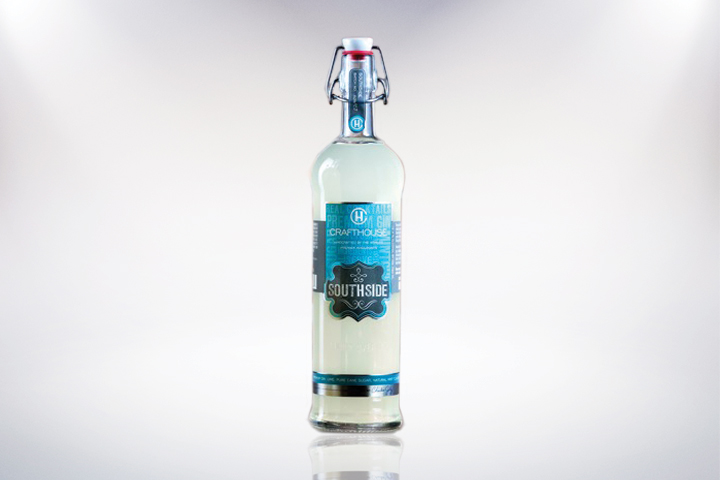
Created by Chicago bartender Charles Joly, Crafthouse offers three drinks:
- Moscow Mule: Crafthouse takes this classic cocktail and runs with it, using high-quality ginger beer that’s more spicy than sweet.
- Paloma: This popular summer drink is the combination of blanco tequila, lime, and Crafthouse’s house-made, all-natural grapefruit soda.
- Southside: The traditional recipe includes gin, mint and lemon, but Crafthouse substitutes the lemon with lime for a refreshing twist.
Each 750 milliliter bottle is $20, at 10-15 percent ABV.
2. BULLY BOY DISTILLERS’ HUB PUNCH

Bully Boy’s Hub Punch is a rum “infused with fruits and botanicals.” This cocktail was inspired by the original Hub Punch recipe, first prepared at the Hub Hotel in Thousand Island Park, N.Y. before it was brought to Boston and made popular in the 1800's.
Remember that this option isn’t a true mixed cocktail. Here's one way to enjoy it:
- 1 part Hub Punch
- 2 parts soda water
- 2 parts ginger ale.
Each 750 milliliter bottle is $29 at 35 percent ABV.
3. WATERSHED DISTILLERY’S OLD FASHIONED
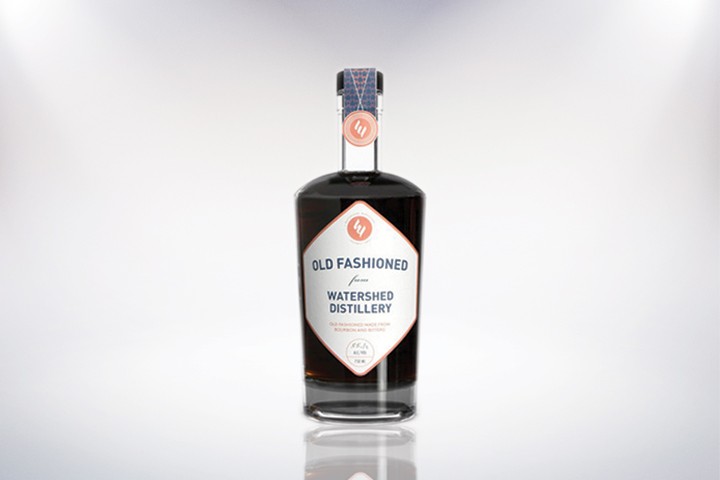
Columbus, Ohio-based distillery Watershed offers a delicious Old Fashioned. Ingredients include bourbon, bitters, raw sugar and Ohio cherry juice for a bold flavor with just a hint of sweetness.
Each 750 milliliter bottle is $35, at 35.1 percent ABV.
5. CAMPARI BOTTLED NEGRONI

This reliable favorite is a combination of London dry gin, Cinzano sweet vermouth and, of course, Campari.
Each 1 liter bottle is $40, at 25 percent ABV.
4. HOCHSTADTER’S SLOW & LOW ROCK & RYE
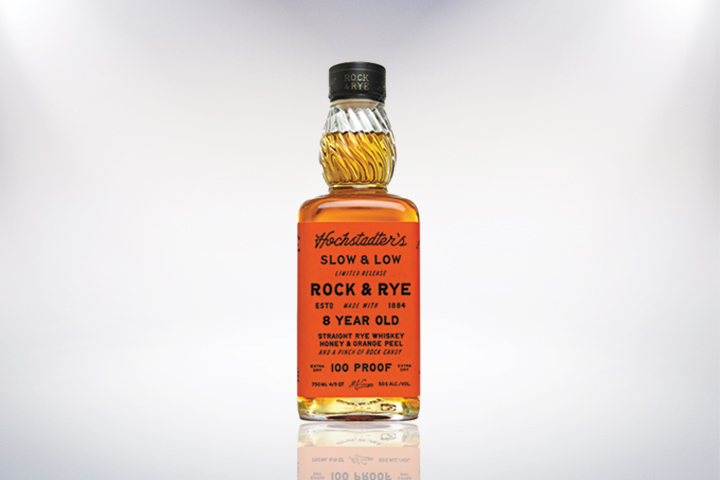
This limited-release concoction is made with eight-year-old 100-proof rye, honey, orange peel, and “a pinch of rock candy.” Not for the faint of heart, it is best enjoyed in small sips, and with lots of ice.
Each 750 milliliter bottle is $35, at either 42 percent or 50 percent ABV.
COMING SOON: COURAGE+STONE
Keep your eye out for comedian Aisha Tyler’s cocktail line, set to launch this fall. The cocktail-enthusiast’s line will include a whiskey Old Fashioned (with rye), a gin Old Fashioned (with grapefruit bitters), and a Black Manhattan.
Article published by Liquor.com
Laverne Cox Becomes 1st Transgender Actress to…
Laverne Cox is set to make history with her new TV role. The “Orange Is The New Black” actress will play a series-regular in the upcoming CBS legal drama Doubt, making her the first transgender actress to portray a transgender main character in a broadcast television series.
The pilot episode was recently given the green light, and Cox took Instagram to express her excitement. “We are picked up for series. So grateful and so happy. Congrats to the entire #Doubt family. Can’t wait to see you all again. #cbs #PickedUp #Gratitude #manifested”, she posted. Although the series is still filming with no release date just yet, Cox’s new role looks very promising.
In the meantime, the longtime activist continues to use her influence to overturn HB2, the so-called “North Carolina bathroom law.“Those bills are about making us not exist,” Cox said at the 4th annual Forbes Women’s Summit this week. “For decades [we’ve] been told that we don’t exist … But I’m a testament that trans people do exist. There are trans people all over this country that exist", she continued.
Fortunately for Cox, she’s got some big name allies in her corner. The backlash over the “bathroom law” was almost immediate. Companies like PayPal and Deutsche Bank canceled business expansion in the southern state. Musicians like Bruce Springsteen, Pearl Jam, Demi Lovato and Nick Jonas have also cancelled North Carolina tour stops. If you ask us, together, they may very well get the response they desire.
Article Originally Published by our friends at Rolling Out.t
Azealia Banks responds to Twitter suspension
Azealia Banks is arguably hip-hop’s queen of online shade. She has made a name for herself not only for her innovative, genre-bending music but also her long list of beefs with fellow celebrities. But now it seems like Banks’ fiery online temper has finally caught up with her, as earlier this week Twitter banned Banks over her most recent celebrity feud.
The drama all began earlier this week when Banks blasted former One Direction singer Zayn Malik, accusing him of stealing her style for his new “Like I Would” video.

After Malik fired subtle responses at Banks, the rapper went into shade overdrive and hurled a series of bigoted, homophobic tweets at Malik.
“@zaynmalik lol u a b—- n—- for even responding like that. Keep sucking this yung rapunxel d— u hairy curry scented b—-,” Banks wrote in one tweet, while in another she wrote, “Token sand n—- pout: “I was the least celebrated in the white boy group because I’m brown.”
During Banks’ shade fest, 14-year-old Disney channel actress Skai Jackson chimed in and advised Banks to “simmer down.” That’s when Banks turned her attention to Jackson and scolded her for jumping in the beef.
“And you need to grow some hips and start ur menses. stay in a child’s place,” Banks wrote to Jackson.
That’s when Jackson fired back with a now infamous response to Banks.

Photo credit: Instagram – @skaijackson
“@AZEALIABANKS a meme with 2.3 million Instagram followers. My memes are more relevant than you now that’s sad. Now bye Twitter troll,” Jackson said in one of her responses to Banks.
Never one to be silenced, Banks continued her rants against Malik and Jackson. But it looks like Twitter had enough of Banks’ controversial comments because yesterday it was revealed that the social media site had suspended Banks' account.
Well, Banks didn’t seem too hurt by the news of her Twitter suspension because she went straight to Instagram and shared how she felt about the news, as well as her latest thoughts on Malik and Jackson. Read what she had to say after the cut.
Article Originally Published by our friends at Rolling Out.

